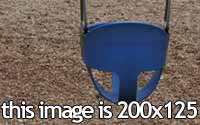Thumbnail file name should be: lastname-tzr.jpg EX: hernandez-tzr.jpg et semper magna laoreet at. Fusce pulvinar, neque non rutrum accumsan, mi sapien vulputate orci, vel sollicitudin neque lorem non lectus. Nullam justo est, tincidunt in suscipit sit amet, mollis at justo.
Nulla facilisi. Nullam vestibulum condimentum turpis, et semper magna laoreet at. Fusce pulvinar, neque non rutrum accumsan, mi sapien vulputate orci, vel sollicitudin neque lorem non lectus. Nullam justo est, tincidunt in suscipit sit amet, mollis at justo.
Nulla facilisi. Nullam vestibulum condimentum turpis, et semper magna laoreet at. Fusce pulvinar, neque non rutrum accumsan, mi sapien vulputate orci, vel sollicitudin neque lorem non lectus. Nullam justo est, tincidunt in suscipit sit amet, mollis at justo.
By Chris Foy
On October 29, thousands of southern California residents became zombies -- not to feast on human flesh but to challenge a world record.
"Once you cross this line you are hungry for brains," shouted a young college student standing just beyond Ocean Boulevard and Locust Avenue in Long Beach. He volunteered to help direct the participants at the Long Beach Zombie Walk. Waving an orange flashlight to capture the attention of the rowdy crowd, he guided the horde to the march's official start. The moaning and groaning grew louder and the participants began their stumbling march on the city. Film and television producers, knifemaking companies, and even board game designers have been capitalizing on the public's newfound fascination with the undead -- but their success proves the trend is no joke.
Organizers estimate that between 11,000 and 14,000 Californians wearing sickly pale makeup and fake blood participated in the event. But the Guinness books have not changed. Seattle and New York each had their own zombie walks in October, also drawing thousands to their streets.
"Zombies pose a threat to the safety of the world," said David Crudge, a blogger for Paranormal Haze, referring to the ultimate terror a zombie apocalypse could instill in survivors. "Society fears the fact that we can do this to ourselves," he added. "Take the subject matter of the Cold War, the threat of nuclear destruction and substitute it with widespread illness. It creates killers out of anyone unlucky enough to become infected, turning them into the embodiment of a virus," Crudge emphasized.
But how did zombies become a living part of our society? Does our country's current state of affairs, be it the financial crisis, massive unemployment, the wars on terror both domestically and abroad, political unrest, and natural disasters, that influence our fear of a zombie apocalypse? Some sociologists and writers certainly think so.
Blogger Crudge pointed at the growth of the military industrial complex over recent decades as one of the main reasons. Once society developed "the technology to destroy itself, it won't last too much longer before violent conflict arises," added Crudge.
Given the upheaval of Middle Eastern power structures in Libya, Tunisia, Egypt, and now Syria, societal norms are shifting away from the few despite the often violent efforts by authorities to stifle the rebellions. And although a zombie virus is not the most realistic of fears, Crudge acknowledged, it is a metaphor for society's ability to destroy itself.
In a History Channel documentary released last October, Zombies: A Living History, horror authors and scientists explored the possible reasons for the undead's grasp on our subconscious.
"The notion that they're coming after you just because you have a beating heart is terrifying," said Max Brooks in the documentary. Although he has authored two popular books about the zombie apocalypse, The Zombie Survival Guide and World War Z, which is set to be released next year as a feature film starring Brad Bitt, Brooks said he is still scared to death of the undead. "All other monsters try to destroy individual humans," added Brooks. "But zombies come after the entire human race."
But Brooks is not the first to warn society about the possibility of an undead nightmare coming true. Ishtar, the Mesopotamian goddess of fertility, love, and war, spoke of the dead rising to consume human flesh in the sixth tablet of the Epic of Gilgamesh. Threatening the keeper of the underworld if she was not let in, Ishtar said: "I will raise up the dead and they will eat the living. And the dead will outnumber the living." The most conservative estimates by historians date the clay tablets containing parts of the epic poem at over 3,100 years old.
Seeing an opporunity to capitalize on current trends, or to soothe fears of the dead rising, two prominent knifemakers recently introduced weapons and tools specifically designed for a zombie apocalypse. Most recently Gerber knives, an almost sixty-year-old company, released their apocalypse kit containing two machetes, a variety of knives, and a camp axe. Released on November 21, the company's $350 survival kit sold out by December 1.
Mike May of Backbone Media, a public relations firm employed by Gerber knives, explained: "What if it happens? What if our worst fears are realized? If the dead walk, the continuation of the human race will become a daily struggle. Are you prepared to protect and defend your family and friends? Your best chance lies in the Gerber Apocalypse Survival Kit," said May. "To beat the uprising, we must work together...arm ourselves, and organize post-apocalypse," he continued."
But Gerber is not the only company of its kind to explicitly target zombie fanatics. First sold in 1898, Ka-Bar knives have been used by the U.S. military for decades, and on May 1, they released the Zombie Killer series of blades. While Gerber's zombie survival kit was offered first as a limited edition item, Ka-Bar plans on continuing to sell the green-handled blades.
Public relations officer for Ka-Bar, Joseph Bradley, touted that "in an ever-changing world, the need for preparedness has never been greater. Without notice, the game can change and the rules no longer apply," said Bradley. "Whether setting up camp or securing your perimeter the original zombie knives are designed to perform under the most rigorous, unexpected, and apocalyptic situations, he wrote.
Henry Lee, owner of the All-American Military Surplus in Fullerton, has had success with the knives. "We display all of the zombie models that Ka-Bar makes," said Lee. "They are very popular," he added.
Although the products might be popular, Nick Leonard of Adventure 16 in Los Angeles said it is rare for customers to approach him with an eye on anti-zombie weaponry. I've never had someone come up to me and ask for [these] certain things to help them prepare for the zombie apocalypse. It's not realistic. Occasionally, Leonard added, "we do have our fair share of peculiar customers." "People come here if they are going to get earthquake supplies, or for other natural disasters...end-of-the-world-type stuff," said Leonard. "Not specifically to fight brain-eating mutants."
Over the past fifty years, the actual zombies shown in film and television have evolved; but centuries-old texts from the Middle East and Europe show a consistently frightening image of man-eaters. According to Arabic folklore, women who led sinful lives would become "ghouls" after death. Stuck in the desert for eternity, they would trick male passersby into coming close enough so as to feast on their living flesh. In Night of the Living Dead, a 1968 film that many call the first and the most influential zombie movie, director George Romero pulled the term "ghoul" from Arabic mythology and placed it into the mouths of his characters. It stuck.
An original series on American cable channel AMC, The Walking Dead, restored the public's fear of zombies when the show premiered on Halloween, 2010. It received a Golden Globe for the best drama on television, and a second season began last month to the accolades of critics. Gerber's apocalypse survival kit, which was entirely sold out within two weeks of its release, was first featured in the second season of The Walking Dead.
According to Corey Maynard, Gerber's vice president of marketing, fans of the television series suggested that the toolkit become available to the public. Gerber listened.
"The buzz surrounding The Walking Dead this season has been tremendous," said Maynard in a November press release announcing the limited edition knifeset. "[It] represents a tangible way to keep the momentum going and frankly our customers have been asking where they could find it...we felt it was our duty to make them available," added Maynard.
Frank Galati, owner of a Missouri-based firearms and knife shop called Galati International, carries Ka-Bar’s Zombie Killer series.
“It’s more for the younger crowd,” said Galati. “Many manufacturers are creating lines [of products] catering to the zombie theme.”
But Galati, who has been in the weapons business since 1983, said this increase in sales of undead-slaying equipment will not last forever. “Like anything, the trend will last a few years and customers will move on to something else,” he said.
Kaylee Wicks, who works at Field Time Sports and Guns, a shooting and camping store based in Orange County, agrees when it comes to the typical buyers of products marketed to the aspiring zombie hunter. “We mainly get the younger crowd,” noted Wicks. But she also actively prepares – along with her brother – for the unlikely event of an undead uprising. “It could happen or it could not,” added Wicks. But she said she does not see many customers who come in to openly gearing up for it.
When asked what weapons he would choose to battle infected hordes during a zombie apocalypse, Galati mentioned he would prefer “the sword of the spirit” – suggesting that if mankind’s situation turned that dire, the only thing that could save anybody would be the grace of God.
No one can predict where or when the next zombification of popular culture will take place, but it is certain that some will try to profit from the trend.




